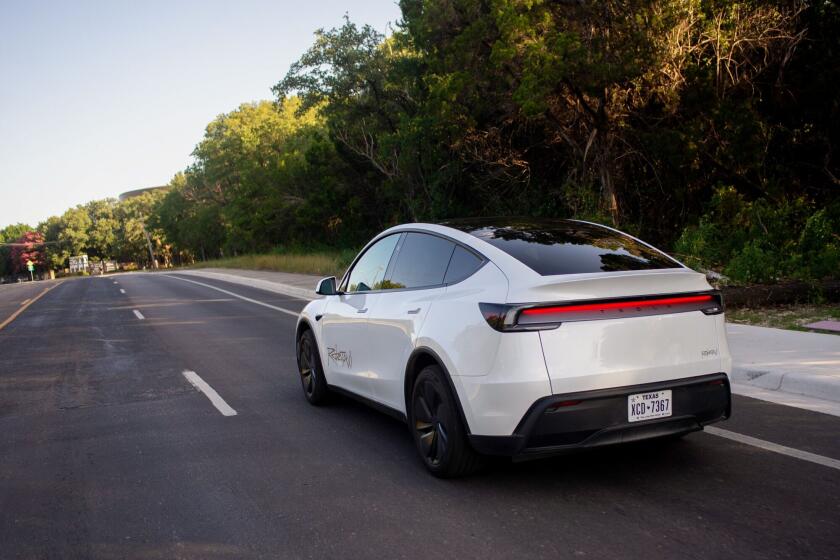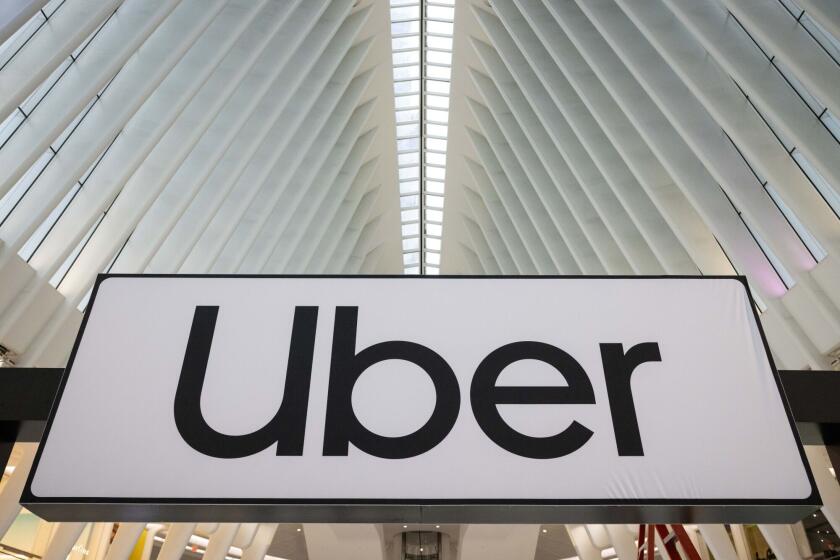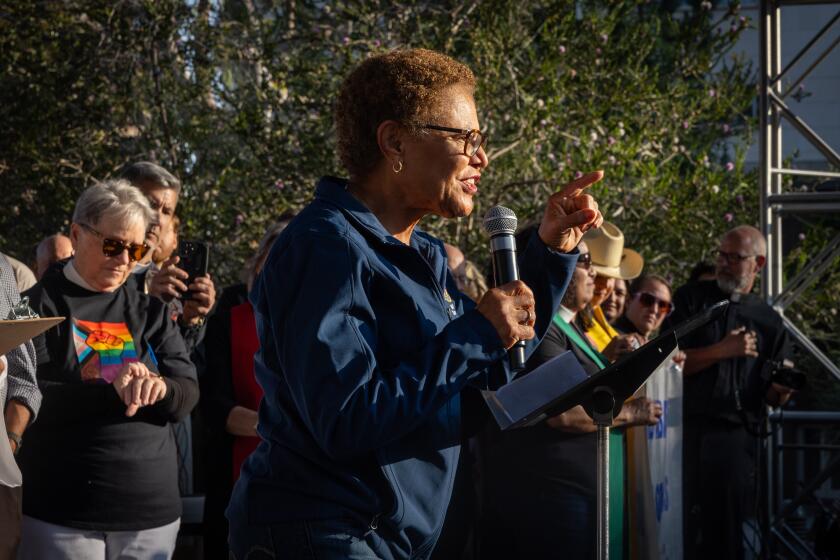Road to Status : Long Beach Freeway (State Route 7) Is Now U.S. Interstate 710
- Share via
For years it’s been plain old State Route 7--the Long Beach Freeway. But no longer. The freeway has been elevated to national status and it’s now U.S. Interstate 710.
Making the new designation official, signs bearing the familiar red, white and blue interstate shield are going up along a 20-mile stretch of the freeway between Pacific Coast Highway in Long Beach and the San Bernardino Freeway in Monterey Park.
At the same time, the old green signs, which have identified the freeway as State Route 7 since it was built in the 1960s, are coming down.
The Long Beach Freeway is the Los Angeles region’s eighth interstate route.
While the new interstate signs will mark the only visible difference in the freeway initially, its federal status is expected to bring significant benefits over the next few years to motorists, to the communities and cities through which it passes and to the route itself.
Significant Benefits
Federal officials designated the Long Beach as an interstate to make it eligible for so-called 4-R funds. The federal government provides 92% of the money for reconstruction, rehabilitation, resurfacing and restoration of designated interstate routes, according to California Department of Transportation officials.
They pointed out that some sections of the freeway are badly deteriorated because of the heavy truck traffic that serves eastern and southeastern Los Angeles County’s industrial areas and the Port of Long Beach. Daily traffic counts run up to more than 175,000 cars and trucks at the freeway’s junction with the Santa Ana Freeway in the City of Commerce.
Donald Watson, Caltrans’ new district director, said the freeway’s new federal role also will help many businesses and cities because identifying with an interstate route has certain advantages, including “status and recognition.”
Meanwhile, putting up the new interstate signs is taking longer than expected. Workmen began installing a total of 1,694 shields and signs on overhead structures, at on-ramps and on bisecting freeways and major highways nearly three months ago and still aren’t finished.
The job is costing $86,000, with Caltrans supplying the signs and hardware.
Caltrans officials were quick to point out that the Long Beach Freeway’s new standing as part of the Interstate Highway System has no bearing on the freeway’s controversial “missing link” through South Pasadena.
The freeway presently ends at Valley Boulevard in Alhambra north of the San Bernardino Freeway. Efforts to build it beyond that point through a section of northeastern Los Angeles, South Pasadena and Pasadena have been stalemated for nearly 20 years over route differences. A new series of environmental studies could lead to its construction, although not before 1990.
“There’s no connection between this federal designation and the freeway’s extension (north of Valley Boulevard),” Watson said. “It’s not a prelude for more federal money (to build the ‘missing link’ ”).
New Designation Only
A Caltrans official said a short stretch of the Long Beach Freeway in Long Beach could be upgraded to interstate status later but Route 7, through part of Los Angeles, South Pasadena and Pasadena, is getting only a new state designation--Route 710.
Most of the Los Angeles region’s other interstate routes were already part of the established 43,500-mile federal highway system.
They include the San Bernardino and Santa Monica freeways, both I-10; the Santa Ana and Golden State freeways, I-5; the San Diego, I-405; the Foothill, I-210, and the San Gabriel River Freeway, I-605. The Century Freeway, I-105, was added to the system in the late 1960s to qualify for federal construction funds. Recently the Harbor Freeway, I-110, was brought into the interstate network to get federal funds for a planned transit-way.
More to Read
Sign up for Essential California
The most important California stories and recommendations in your inbox every morning.
You may occasionally receive promotional content from the Los Angeles Times.













